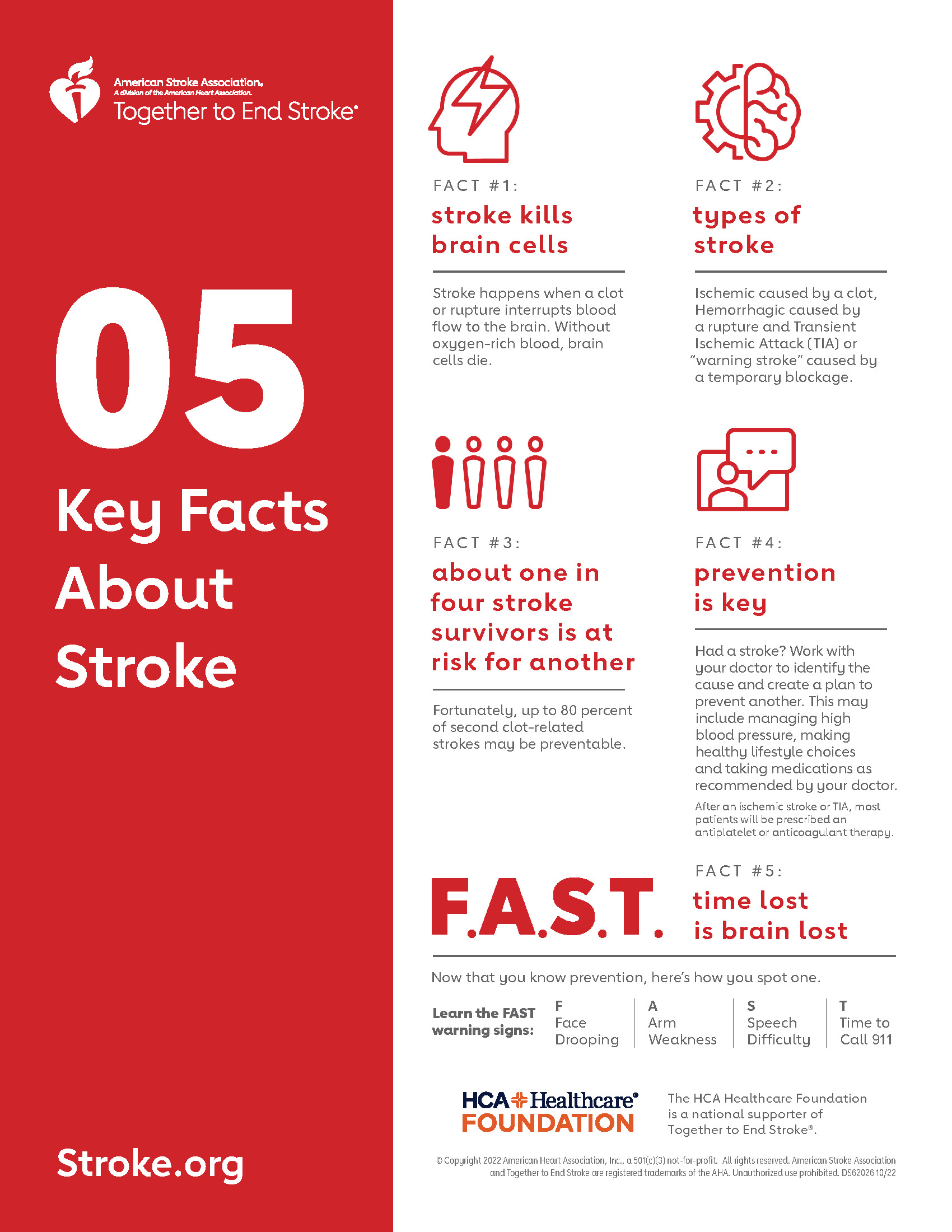Fact #1: Stroke Kills Brain Cells
Stroke is a medical emergency that occurs when a clot or rupture interrupts the blood flow to the brain. Without the presence of oxygen-rich blood, brain cells die rapidly. The aftermath of a stroke can have life-altering consequences and may result in long-term disability.
Fact #2: Types of Stroke
There are primarily three types of strokes:
- Ischemic Stroke: Caused by a clot blocking the blood vessels in the brain.
- Hemorrhagic Stroke: Caused by a rupture in the blood vessels, leading to bleeding in the brain.
- Transient Ischemic Attack (TIA): Often referred to as a “warning stroke”, it is caused by a temporary blockage. Though the symptoms may not last long, a TIA is a major red flag for a possible future stroke.
Fact #3: Stroke Recurrence Risk
About one in four stroke survivors is at risk for another stroke episode. However, there’s a silver lining. Up to 80 percent of second clot-related strokes might be preventable with the right care and lifestyle changes.
Fact #4: Prevention is Key
If you’ve had a stroke, it’s crucial to work with your healthcare provider to identify the cause and devise a preventive strategy. This may include:
- Controlling high blood pressure.
- Keeping cholesterol levels in check.
- Making dietary modifications.
- Using prescribed medications such as antiplatelets or anticoagulants.
Remember, after an ischemic stroke or a TIA, most patients will be recommended an antiplatelet or anticoagulant therapy to prevent recurrence.
Fact #5: Time is of the Essence
In the event of a stroke, remember: “Time lost is brain lost.” The quicker the intervention, the better the chances of recovery and reducing long-term damage.
How to Recognize a Stroke? Use the F.A.S.T. Method:
- F (Face): Look for facial drooping on one side.
- A (Arm): Check for arm weakness. Is one arm drifting downwards?
- S (Speech): Listen for speech difficulty. Is their speech slurred or hard to understand?
- T (Time): If you observe any of these signs, it’s time to call 911 immediately.
For more information and resources on strokes, visit https://www.stroke.org/en/about-the-american-stroke-association/world-stroke-day
